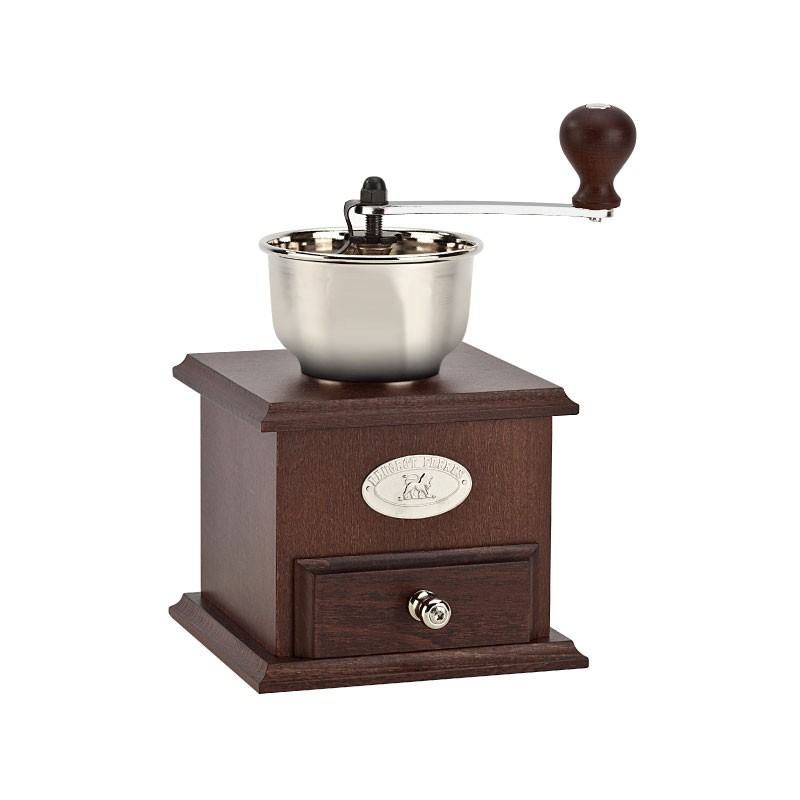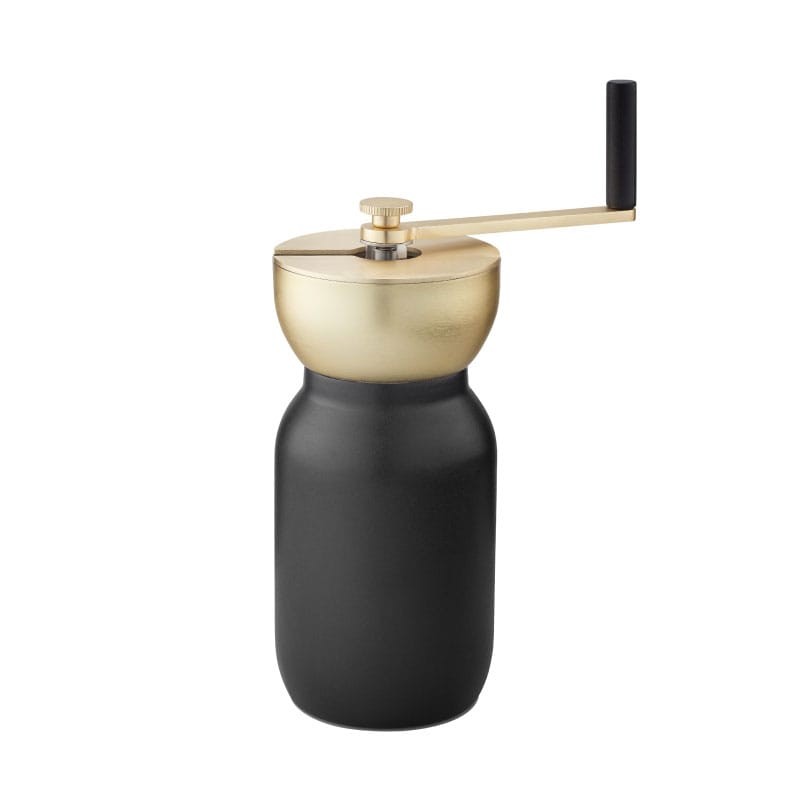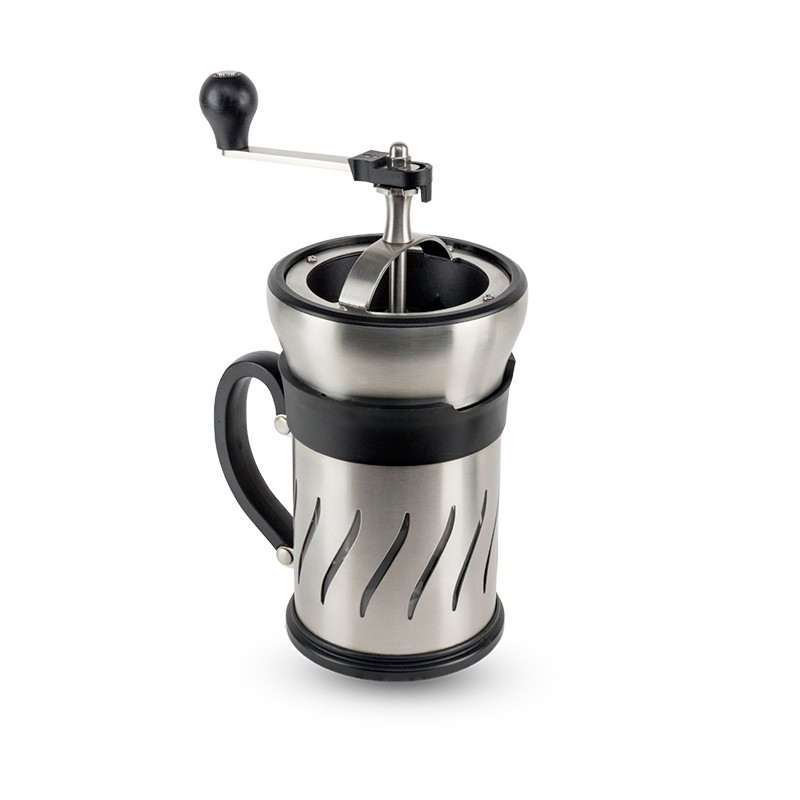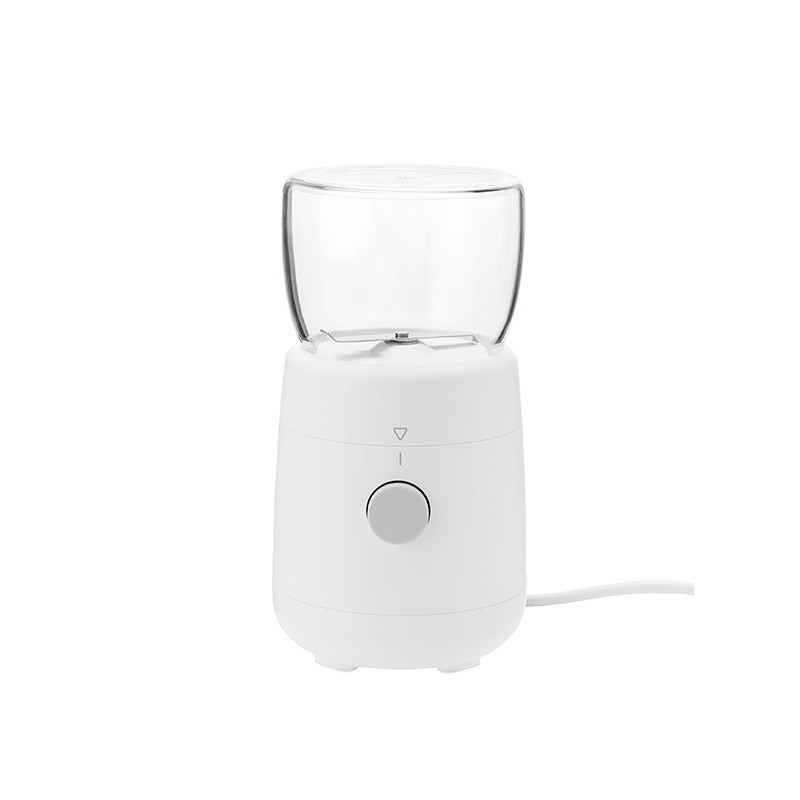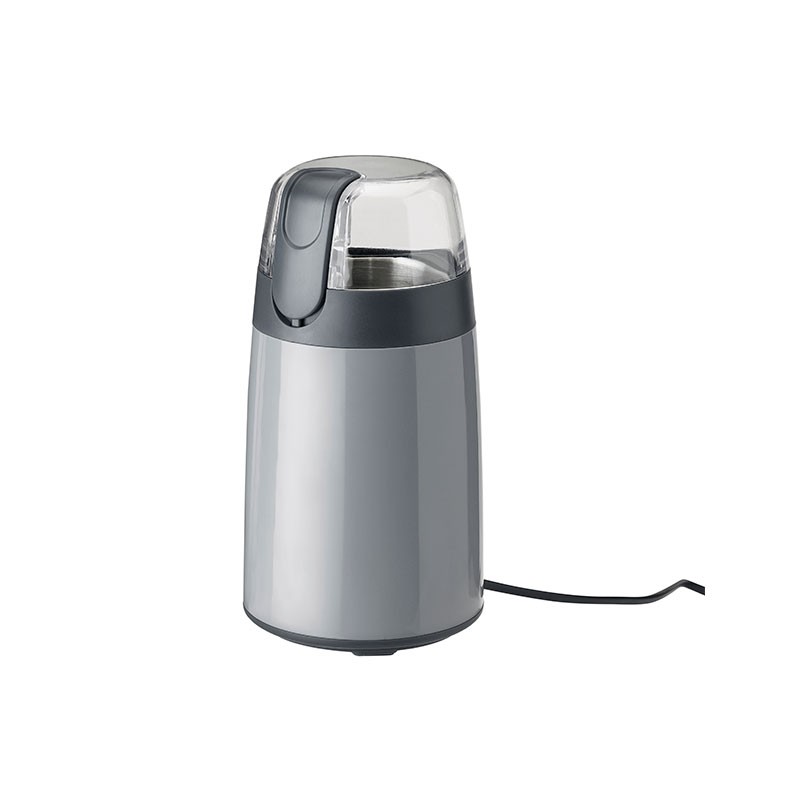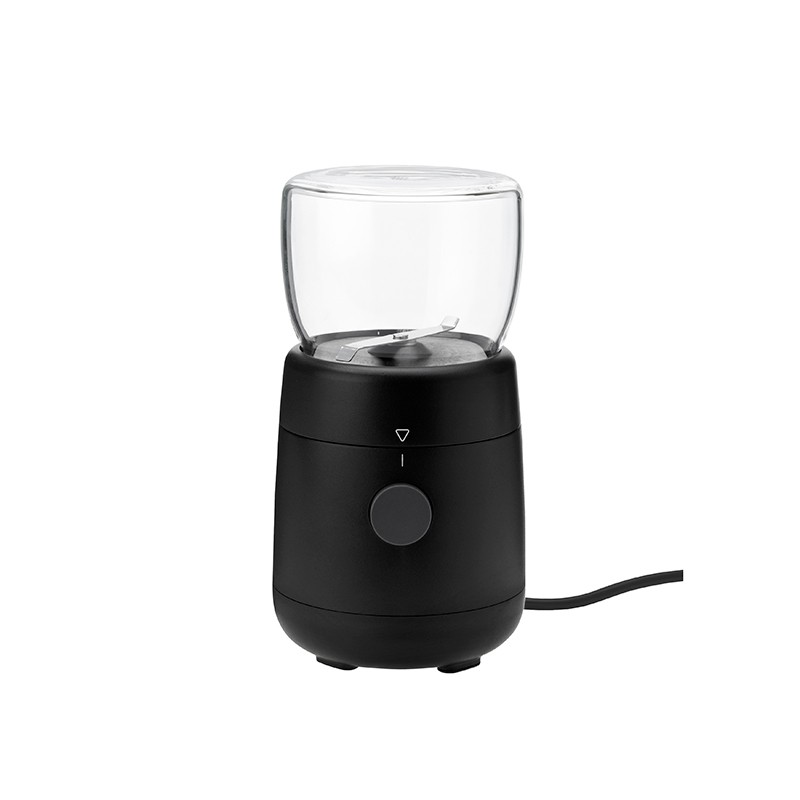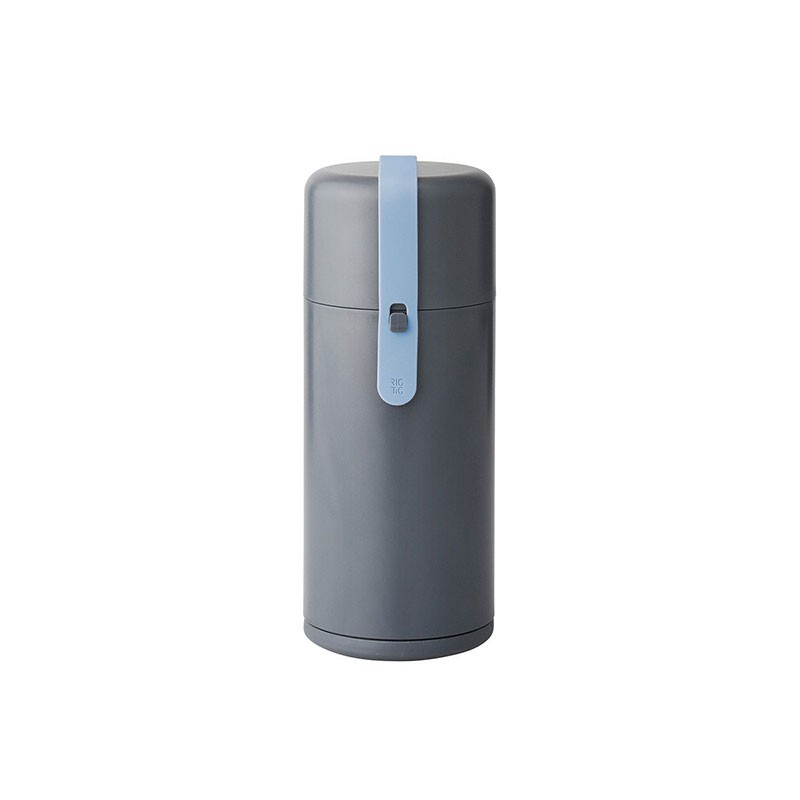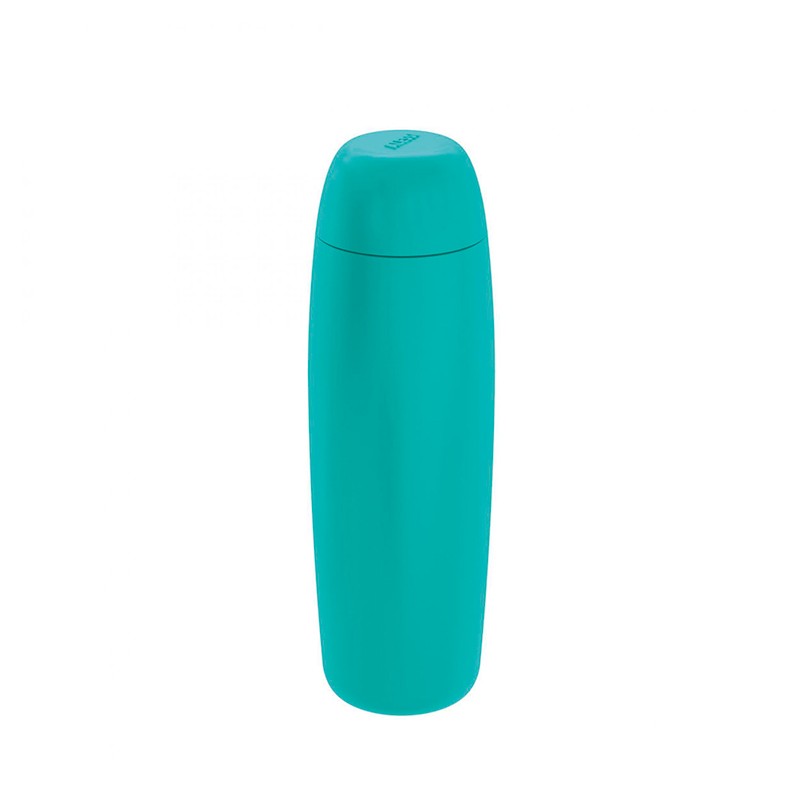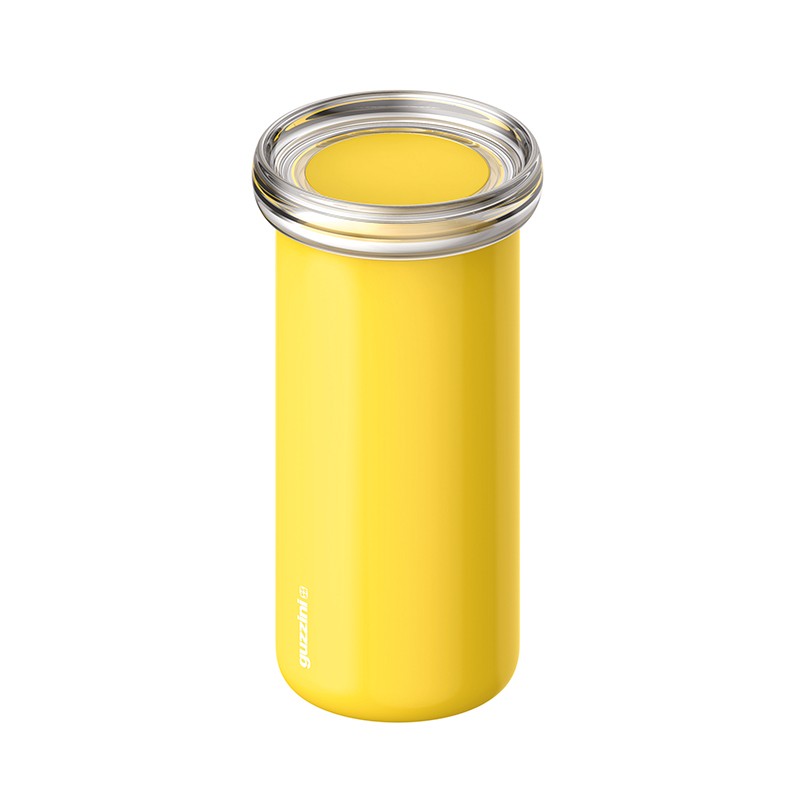Product successfully added to your shopping cart
There are 0 items in your cart. There is 1 item in your cart.
Last blog articles
A Musical Christmas: Classics and Jazz to Celebrate with the Family -
How to Cut Cheese and Create the Perfect Cheese Board for Your Christmas Table -
Celebrate and Offer - Christmas gift ideas -
Goodwill: The Magic of Christmas in Pieces That Tell Stories -
Hermann Bauer: Christmas Gifts with Tradition and Elegance -
Learn how to prepare the best coffee at home!
Published : 02/27/2021
Categories : Let yourself be Inspired

Coffee break? Mmm.. we already smell that good and distinct aroma of freshly made coffee! This drink is appreciated all over the world, but did you know that it is in the Nordic countries that most coffee is consumed? About 10kg, per person, per year!
Making coffee may, at the first sight, seem simple, but it is full of techniques and secrets! In this article, we are going to show you a bit of this incredible world!
1º - Type of bean
For a better experience, the first step in any preparation is to choose the type of bean (seeds inside the berries of the coffee tree) that we would like to use. The most commercialized species are: Arabica (most popular and results in mild and aromatic coffees, with a lower caffeine content) and Robusta (results in slightly more “bitter” coffees with a higher caffeine content)
2º - Beans grinding
During the roasting, beans are filled with aromas, which are protected inside their capsule. During the grinding, the beans are exposed to oxygen, the oxidation accelerates and the aromas are released, which makes it essential that this process is done immediately before preparing your coffee to keep the maximum flavor, aroma and texture.
To grind beans, you can choose manual or electric grinders:
Manual consumes more time but has the advantage of allowing, easily, adjustments to the grinding size. For coffee lovers, this type of grinder provides an authentic moment of pleasure, feeling gradually the release of the unique aroma of fresh coffee.
Electric, although notoriously more practical and faster, does not have the option of adjusting the size of the grind (the most common).
Depending on the method you will use to prepare your coffee, the grinding must be one of 5 possible: very fine, fine, medium, thick or very thick.
3º - Preparation methods
There are coffee preparation methods for all tastes, from the concept “slow coffee” where all the potential of flavor and texture of coffee is valued, regardless of the time it requires, to something faster and more intense:
Filtering / Strained
The filtered or strained coffee consists, very briefly, of passing boiling water, in a current way, through the beans already ground (fine to medium), with the help of a paper, metal or cloth filter. Representing this process, we have in the image the Coffee Maker Theo by Stelton.
This method takes, on average, about 5 minutes and it is known for the large amount of coffee it makes, but some alternatives allow you to make individual doses.
The resulting drink tends to be “watery”, with less texture and less acid, making the flavor smoother. This type of coffee is usually consumed pure, without adding anything.
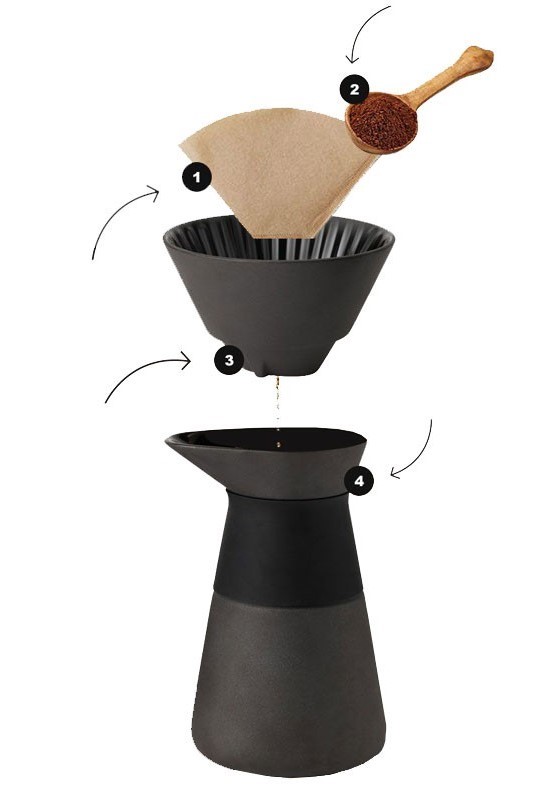
Infusion and filtration
This technique is very similar to the preparation of tea, as it consists of leaving the coffee beans, already ground (thick), in contact with the water for an average of 5 minutes and then filter it. This way will only remain the final drink.
This coffee is characterized by being more intense than the previous, with more texture and rich in aromatic oils. It is also usual to use this method to make more than one individual dose of coffee, at once.
The most known mechanism, which uses this technique, is the Plunger Coffee Maker (French Press), where filtering is done by pushing the plunger to the bottom of the coffee maker. In this path, the metallic filter separates the ground coffee (which remains at the bottom) and the final drink.
Discover here the variety of Plunger Coffee Makers available at In&Out Cooking, knowing that the one shown in the image is the Coffee Maker EM Classic by Stelton.
In addition to the French Press, there are coffee makers, such as the Coffee Maker Muga by Asa Selection, which follows the same principle but is similar to teapots, with a fixed filter in the center of them.
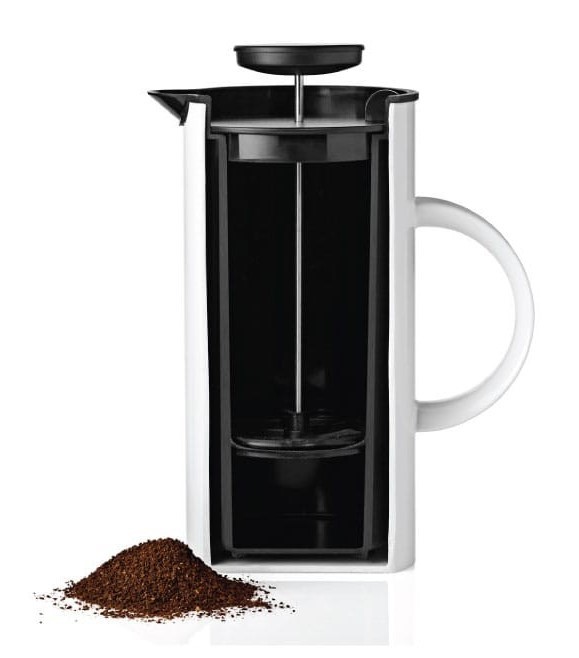
Pressure
Made of aluminum or stainless steel, the iconic coffee maker Moka, used directly on the stove, is divided into three parts: two compartments (bottom and top) and a funnel that separates them, where you can put the ground beans (medium to thick).
When the water at the bottom boils, it rises and goes through the ground beans extracting it under steam pressure. This way makes a small amount of strong and aromatic coffee, very similar to espresso, appear at the top.
In 2019 arise Moka´s redesign, represented in the image, was made by the renowned designer David Chipperfield as a tribute to the creator of the original coffee maker.
Nowadays, there are several coffee makers inspired by the original Moka, which use the same technique, as the Coffee Maker Pulcina by Alessi, or even a more modern and minimalist version like the Coffee Maker Collar by Stelton.
Tip: the coffee tends to become very intense and bitter if the grinding is too fine and, not so intense if it is too thick. Use high heat at the beginning, but don’t forget to reduce it to low heat more or less in the middle of the process, otherwise, your coffee will have a burnt flavor.
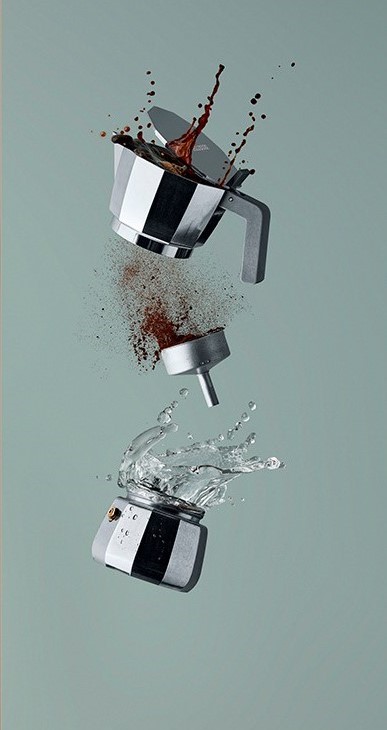
Cold brew
Cold coffee lovers, are you there? This method is the most time-consuming of all and consists of an airtight glass jar or even a French Press, where you put the ground beans (thick), together with cold water and let it sit for 10 to 15 hours. Then, it is necessary to filter the drink to remain without residues.
The fact the ground beans are in contact with water at a low temperature means that undesirable acids and bitter oils do not go into the drink and this way the result is a softer, sweet and lighter coffee with an intense aroma and less acid on the palate, than coffees prepared with hot water.
Espresso Machines
Espresso, as the name suggests, is a drink that is both quick to prepare and drink.
As it has to be prepared by specific machines (usually industrial to obtain a better experience), the most common is to drink the espresso in coffee shops. However, it is also possible to obtain similar machines, more simplified for domestic use, or even the popular capsule machines (which generally result in a final drink with lower quality).
The espresso coffee is extracted with boiling water that goes, under high pressure (the most important!), through the ground beans (fine), which makes the coffee denser and more concentrated than the drinks resulting from other methods.
The result is a very small amount of coffee that, when well prepared, has a characteristic cream/foam on the top.
This type of coffee is the basis for a huge number of drinks. The most common is the addition of milk to obtain, for example, cappuccino, macchiato, latte, mocha, among many others.
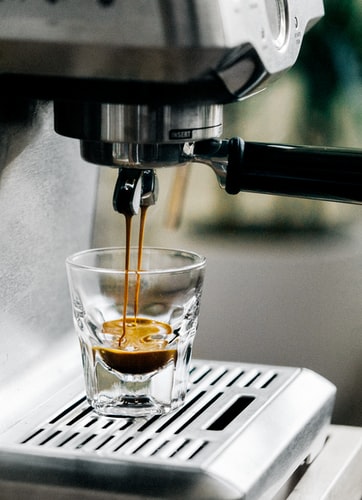
4º Storage
Except for espresso, in all other types, if you prefer not to drink everything at the moment, it is possible to store the drink in a thermal bottle and drink throughout the day, guaranteeing that it keeps hot/cold, without losing qualities and easy to carry.
Thus, In&Out Cooking suggests the Water bottle Keep it Cool by Rig-tig, the Thermo Bottle Food à Porter by Alessi and the Thermo Bottle Energy by Guzzini, available in several colors.
In any of the methods you use, consume your coffee without sugar as, in addition to being able to feel all the distinct flavors present in coffee, your health appreciates!
By speaking of health, did you know that coffee has many benefits? Take a look here at our article regarding this topic.
Now that you spend more time at home, see coffee as more than a source of energy! Venture yourself into new ways to prepare it and rediscover the flavor of this drink.
Warm Your Heart!

